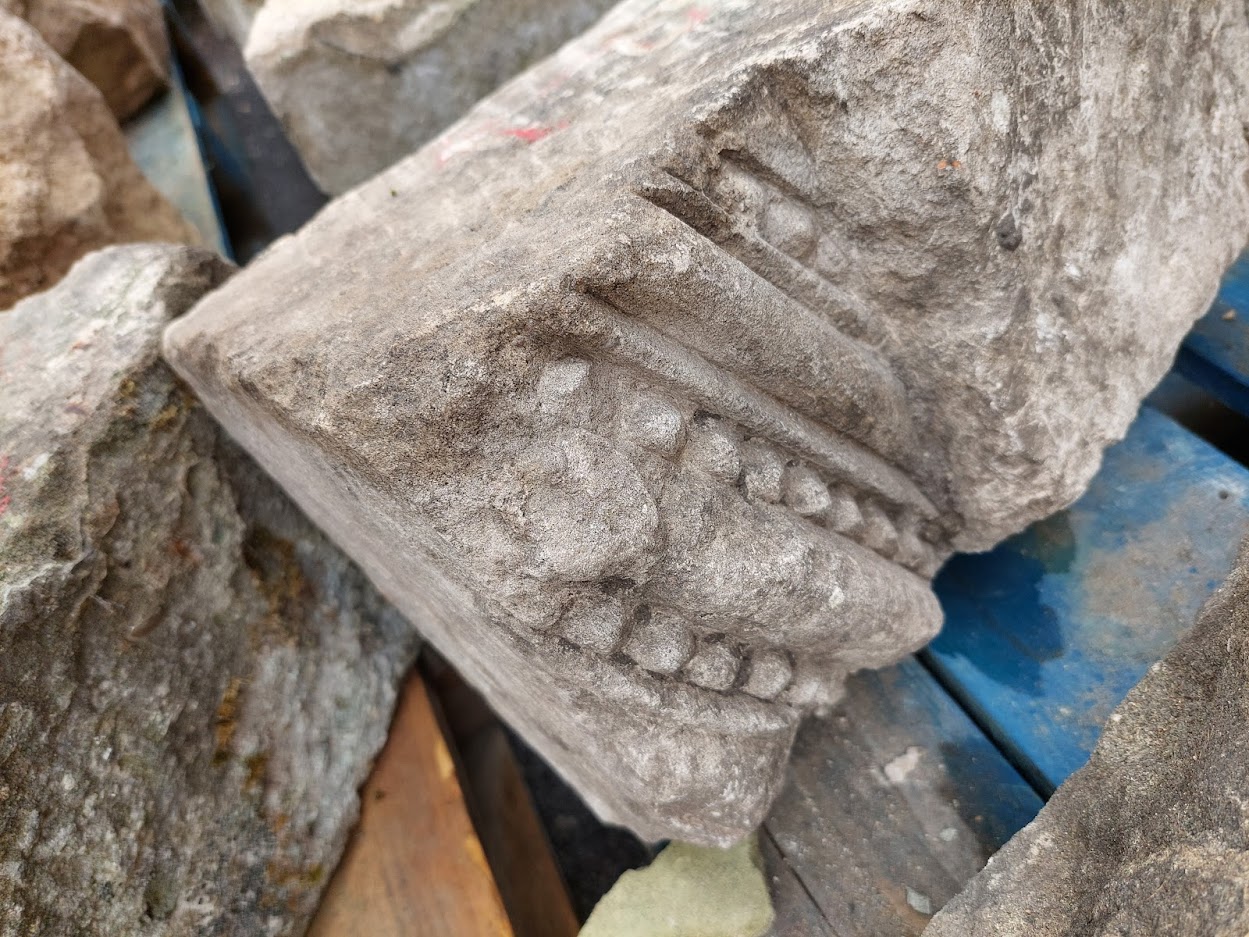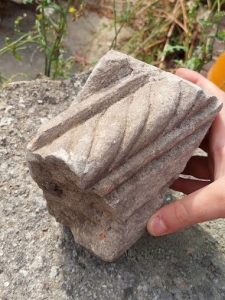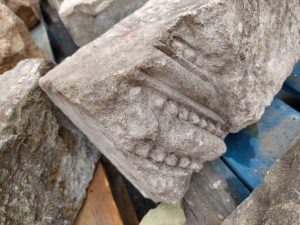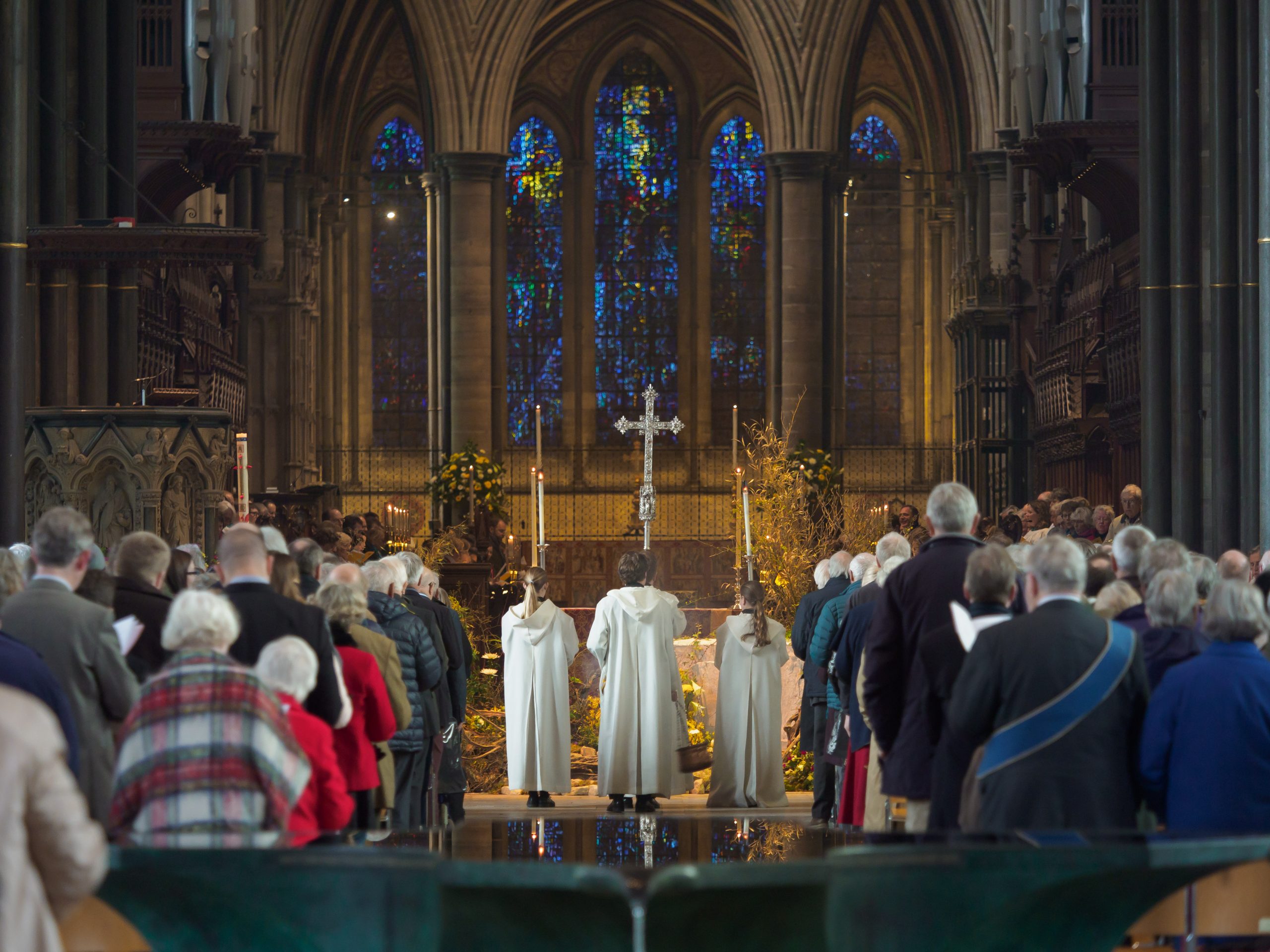Apprentice Stonemason Blog – August 2022

Hello there! My name is Joe, I’m the apprentice stonemason at Salisbury Cathedral, and today I’m back with another blog post about what I’ve been getting up to in my role. It’s been a sweltering past few weeks here in Salisbury, and I’ve been spending a lot of time out in the sun. In fact, I think I’ve discovered a new type of tan – the stonemason’s tan! It’s a lot like your typical summer tan: darker forearms and shins contrasting against pale upper arms and legs, but with the added twist of pale hands and ankles from wearing work gloves and work boots all day every day. It’s an interesting look for sure.
The reason I’ve been spending so much time out in the sun is because I’ve been put on a project to repair part of the cathedral close wall, over at Bishop Wordsworth’s school. For the past few weeks now, I’ve been helping some of our other masons (Andrew, Dave, and Sarah) to dismantle, catalogue, and rebuild a large section of the wall just behind the parapets on Exeter Street. This has been a great experience so far, and an excellent introduction to the other side of stonemasonry from banker work. I’ve learnt so much about how stone walls of this kind are constructed, how to safely dismantle and remove large stones, how to create different kinds of lime mortar mix and their uses, and how to fix and point the stones we put back in and make sure the wall is straight, strong, and level.
That said, the best part about working on the close wall project is undoubtedly the opportunity to see up-close some of the carved stones that were taken from the previous cathedral at Old Sarum when it was demolished and reused at the new site. We knew going into the project that there were a number of decorative pieces, mostly roundels of varying designs, that had been set into the ashlar skin of the wall face-out, and these were listed in the photogrammetry survey we were provided. However, what we didn’t know was just how much carved stone we would find in the wall when dismantling it. So far, we have found a number of structural mouldings of different types, from a basic half-drum pilaster to more complex stones featuring ovolo and fillet shapes that might have been used in a door jamb or window mullion. A lot of these pieces were placed in the wall backwards, so that the flat reverse of the stone could be used as part of the ashlar face. Many of the stones we have found still show clear tooling marks from when they were carved, and a couple look like they were carved with an axe rather than a mallet and chisel.
Even better, we have found more decorative carving in parts of the rubble core. These are evidence of the previous cathedral’s Romanesque style, and feature designs that you won’t see anywhere in the later Early English Gothic cathedral. As beautiful as these carvings are they clearly weren’t thought to be worth holding on to by whoever built the wall, as they were smashed up and thrown in the core to be covered with mortar and hidden away. You may be relieved to hear that we’ve taken quite a different view of them and called in our cathedral’s archaeologist to come down and document them. I’ll leave you with two of my favourite pieces, this bit of rope-moulding, and also this bead-string:






